
Feed your imagination
Savour the last taste of summer, autumnal wines, spaces with soul, art, contemporary architecture and design




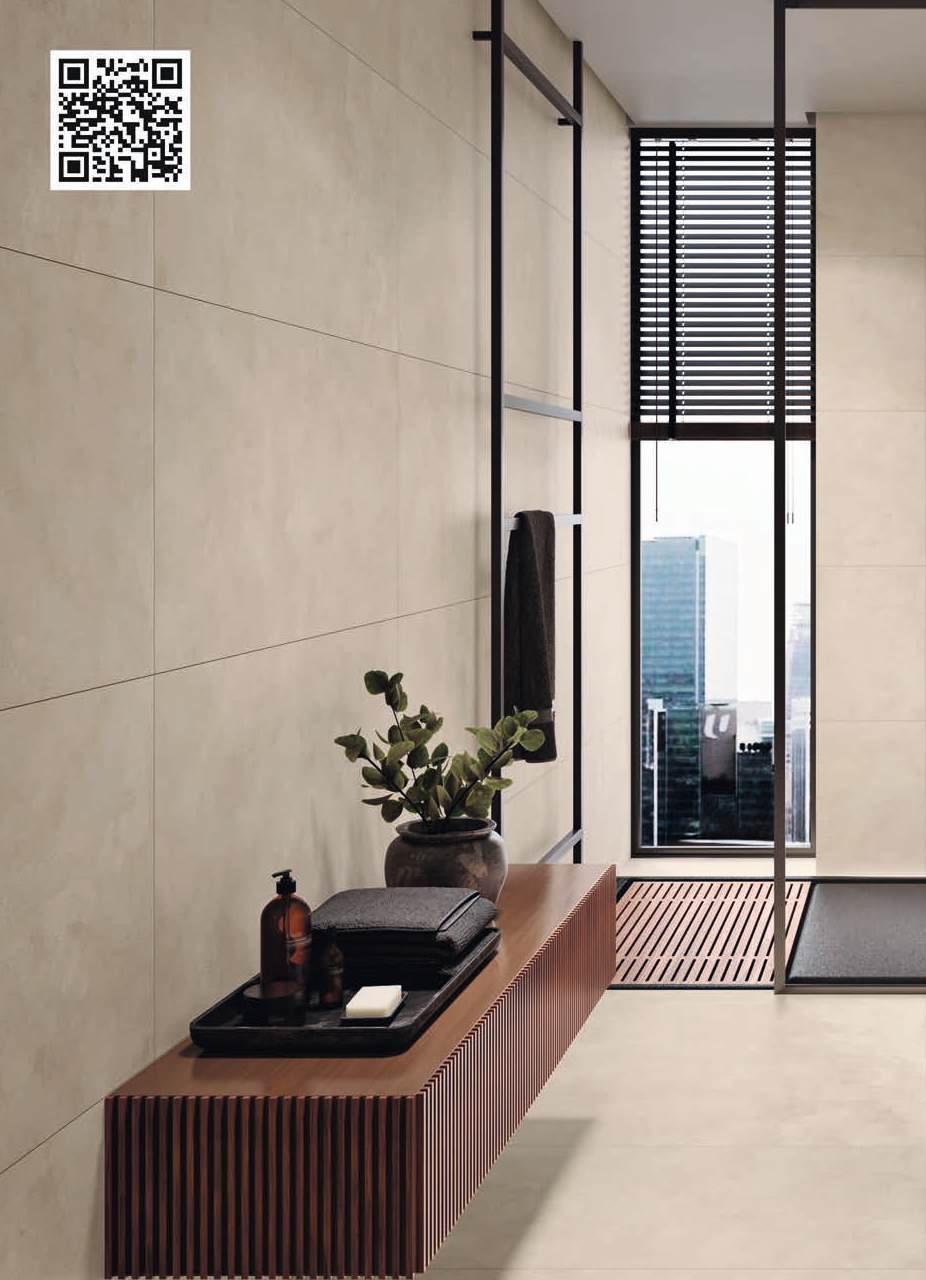



Savour the last taste of summer, autumnal wines, spaces with soul, art, contemporary architecture and design







Thefirst rains fell while we were working on our autumn issue, sweeping away the dust and heat and bringing in a feeling of change. We’re not entirely ready to give up on summer, so we bring a burst of colour and summer-into-autumn flavour to your table. Claire Borg’s vibrant cooking showcases the versatility of fresh, ripe tomatoes and the concentrated flavour of those dried under the Mediterranean sun. Michael Diacono lays on a feast for entertaining that can be prepared in advance, allowing you to relax and mingle with your guests rather than slaving away in the kitchen. Andrew Azzopardi embraces the seasonal shift, switching from cool white wines to bold autumnal and winter reds. And for those times when you want a moment of stillness, there are biscuits and cake from our inhouse kitchen to pair with coffee or tea. In our interiors pages, Megan Mallia explores the joys of maximalism and creating spaces with soul by building up layers of personal history. In our design section, we look at two homes where the design processes moved in different directions. In a rustic house in a quiet street in Gozo’s Xewkija, a new design firm has successfully integrated a minimalist look with the existing vernacular architecture. In a villa area in central Malta, another design firm drew inspiration from the character of traditional stone townhouses to ground their conversion of two unassuming, modern maisonettes into a contemporary openplan home, flooding it with natural light. Finally, we visit Van Gogh’s poets and lovers, the first ever exhibition to spotlight how the artist’s poetic imagination and ideas associated with love became a central theme in his work, inspiring his transformation of the commonplace into realms of beauty.
If you missed any issue of Taste&Flair and want a copy, we may be able to help so please do get in touch with us by email, Messenger, or on Instagram.


Publisher The Daphne Caruana Galizia Foundation 56 Melita Street, Valletta VLT1122, Malta
Editorial Board
Paul Caruana Galizia
Andrew Caruana Galizia
Matthew Caruana Galizia
Executive Editor Corinne Vella
Editorial Assistants Megan Mallia • Amy Mallia
Art Director Ramon Micallef +356 9949 1418 ram@box-design.net
Advertising Manager & Editorial Contributor Sean Ellul +356 7921 0705 sellul@independent.com.mt
Advertising Assistant Christine Mifsud +356 21 345 888 ext 138 cmifsud@independent.com.mt
Production Manager André Camilleri
Production Assistant Conrad Bondin
Prepress & Printing Print It
All communication about Taste&Flair magazine should be directed to Corinne Vella at corinne.vella@gmail.com
No part of any issue of Taste&Flair may be reproduced without the written prior agreement of the publisher.
Distributed with The Malta Independent on Sunday*. The Malta Independent on Sunday is published by Standard Publications Ltd - Tel +356 21 345 888
*The surcharge on The Malta Independent on Sunday, or any charge for this magazine is retained by Standard Publications Ltd.
Follow Taste&Flair on

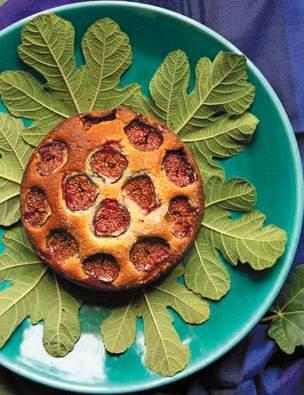





12
Ripe and ready
Prolong the taste of summer with Claire Borg’s tomato dishes
24
Light entertainment
Michael Diacono celebrates Mediterranean flavours 36
Red, red wine
Andrew Azzopardi on embracing the seasonal shift 40
Sweet indulgence
Cake and biscuits to make pausing a pleasure 52
A contemporary take on the Maltese townhouse
66
A rustic Gozo house gets a sleek new look 76
Megan Mallia on the joys of maximalism
78
Exploring Van Gogh’s idealised realms of beauty and meaning,


As Autumn settles in and the children return to school, weekends become even more precious - a time to relax, unwind, and enjoy quality moments with family. After a busy week, the last thing you want is to spend your Sunday juggling kitchen duties and cleaning up. So why not let us do the cooking for you?
Join us at Kon Tiki Restaurant at Radisson Blu Resort, St Julian’s, where our ever-popular Sunday Lunch Buffet returns, offering a wide array of mouthwatering international dishes. A favourite with families for years, Kon Tiki combines exceptional service, a warm, inviting atmosphere, and a menu designed to please every palate.
Each Sunday, our talented chefs create an irresistible selection of food stations that invite you to sample a bit of everything. Start your culinary journey with freshly prepared antipasti, vibrant sushi rolls, and hearty soups. Pasta lovers are in for a treat, with choices like creamy lasagna or pumpkin ravioli drizzled with rucola and cherry tomato oil.
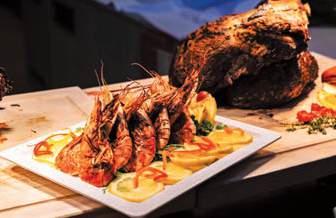

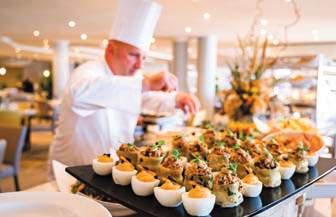


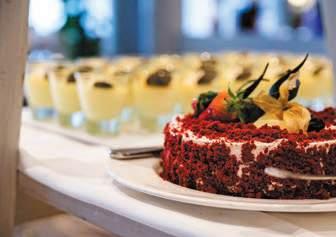





For the main event, you’ll be spoilt for choice. The Fish Station offers delights such as lemon-drizzled swordfish or prawns with salsa verde. At the Carving Station, enjoy beautifully roasted meats including Argentinian rib-eye with mushroom cream sauce and roast pork glazed with honey and orange. Or indulge in succulent beef medallions, pork ribs, and grilled chicken thighs.
The little ones are in for a treat, too! Our Kid’s Station serves up kid-approved favourites like penne with ham, chicken dippers with mayo, and basil-infused meatballs.
All this, paired with live music, free-flowing soft drinks, and water, makes for a perfect Sunday outing. Plus, with complimentary parking at the resort, your experience is as convenient as it is delicious.


Enjoy all that Kon Tiki’s buffet has to offer for just €42.00 per adult and €21.00 per child (6-12), while children under five dine for free. For full details and sample menus please visit www.rdbmalta.com/kontiki. Due to popular demand, it’s always recommended to book ahead to guarantee a table. Please contact Kon Tiki at +356 2137 4894 or email fb.stjulians@rdbmalta.com


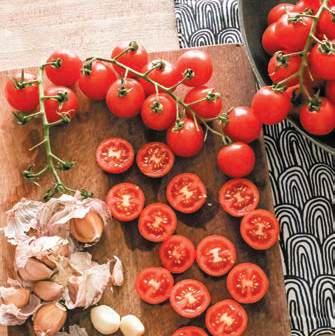

Whether plucked from your garden or picked up from the farmer’s market or a neighbourhood farm, tomatoes are the perfect ingredient to bring a burst of colour and taste to your table. These vibrant recipes showcase the versatility of fresh, ripe tomatoes and the concentrated flavour of tomatoes dried under the Mediterranean sun. Most of these recipes will suit vegetarians. For a vegan variation, omit the cheese and anchovies.

In this recipe I didn’t add feta cheese, as I prepared this as a side dish to serve with a grilled meat platter. For a tasty lunch version, add the cheese and some croutons.
YOU WILL NEED:
1 baby cucumber
8 to 12 cherry tomatoes
1 purple onion fresh dill, mint, basil and parsley, finely chopped
150g cooked chickpeas
10 black olives
FOR THE DRESSING:
3 tablespoons olive oil
2 tablespoons lemon juice
1 teaspoon Dijon mustard
1. Prepare the dressing by putting all the ingredients in a jar and shaking them together until they are well combined. Alternatively, whisk them together in a mixing bowl. Set the dressing aside until needed.
2. Thinly slice the baby cucumber, halve the cherry tomatoes, and peel and thinly slice the onion into rings. Wash the herbs and pat them dry, then finely chop them.
3. Rub the chickpeas together with your hands to remove the outer skins and place the chickpeas in a salad bowl. Add the olives and the chopped vegetables and herbs and stir the ingredients together. Drizzle with the dressing and toss until well coated.
4. Serve the salad immediately or keep it chilled until needed.

Serves 2
YOU WILL NEED:
1 cuore di bue tomato, thinly sliced
1 grapefruit cut into segments
100g feta cheese diced very small or crumbled
1 shallot, thinly sliced into rings microgreens and fresh herbs (I used mixed microgreens and baby basil leaves) poppy seeds
FOR THE DRESSING:
3 tablespoons olive oil
2 anchovy fillets
1 tablespoon wine vinegar
1 teaspoon Dijon mustard dressing (blend until smooth)
1. First, prepare the dressing by blending all its ingredients together until smooth.
2. Next, arrange the slices of tomato on a platter and sprinkle the onion on top.
3. In a bowl, mix the herbs and microgreens with the grapefruit segments and scatter these over the tomatoes.
4. Sprinkle the cheese and poppy seeds over the top. Drizzle with the dressing just before serving.


In hotter weather, this dish can be served lukewarm or cold, according to taste. The sauce recipe makes enough for 6 people or 650 grammes of pasta.
FOR THE PESTO
130g fresh tomatoes
100g sundried tomatoes (I used minced tomatoes)
25g basil leaves
25g pitted black olives
70g whole almonds
2 cloves of garlic
100ml olive oil
70g parmesan cheese black pepper
TO SERVE
Chopped fresh basil and parsley 1 large tablespoon of chopped sundried tomatoes lemon zest
1. Set the cheese aside and put all the other ingredients into a food blender. Blend the mixture until smooth or pulse-blend if you want the pesto to be of a rougher consistency.
2. Fold the cheese into the pesto mixture. At this point, you can either freeze the pesto sauce in a ziplock bag, or place it in the fridge to use later.
3. To serve, first boil the pasta according to the pack instructions, drain it well and drizzle it with some olive oil. Let the cooked pasta cool for a few minutes, then fold in the pesto and add the herbs and more sundried tomatoes. Grate some lemon zest over the top and then plate and serve at once.
I made this salsa as part of a grazing board. It is delicious as a bruschetta topping too. You can also add canned tuna and use the mixture as a sandwich filler. It’s also great to serve with pasta or in a rice salad. For a South American twist, add finely diced jalapeno peppers, cilantro and a squeeze of lime. You can prepare this ahead as it will keep well in the fridge for a couple of days.
YOU WILL NEED:
4 anchovy fillets
1 bell pepper
2 large beefsteak tomatoes
1 small onion
15 pitted black olives mint and basil olive oil chilli or black pepper

1. Grill the bell pepper then place it in a heat proof bowl and cover it. Set it aside until it cools down, then remove the skin and thinly slice the flesh.
2. Finely chop the anchovy fillets and place them in a salad bowl. Dice the tomatoes and peel and finely dice the onion and add these to the bowl too, along with the sliced bell pepper.
3. Drizzle with olive oil and mix all the ingredients together. Season with black pepper or chilli flakes to taste. Serve immediately.


YOU WILL NEED:
150g couscous
200 ml boiling water olive oil
juice and zest of 1 lemon a large handful each of fresh mint, basil and parsley
4 beefsteak tomatoes
1 bunch of Maltese rucola
2 dried white ġbejniet (optional)
1. Drizzle the couscous with olive oil and the lemon juice and stir it well. Pour the boiling water over the couscous and set the bowl aside while you prepare the rest of the ingredients.
2. Finely chop the herbs and place them in a large bowl. Roughly cut the tomatoes and add them to the same bowl. Next, add the chopped rucola and the chopped cheese, if you’re including it.
3. Using a fork, fluff up the couscous and set it aside to cool down. Now, add the rest of the ingredients and stir them in well.
4. Season the salad with lemon zest and black pepper and another good drizzle of olive oil. Serve this immediately or keep it chilled until needed.


For a starter, snack, or simple meal, serve this with Stracciatella cheese and freshly baked crusty bread to mop up the luscious juices.

YOU WILL NEED:
30 cherry tomatoes
6 large cloves of garlic olive oil
sea salt fresh dill
1. Preheat the oven to 210°C.
2. Cut the tomatoes in half and place them on a baking sheet lined with non-stick paper. Sprinkle the garlic cloves among the tomatoes and drizzle the lot with olive oil.
3. Bake the tomatoes in the preheated oven until they start to caramelise. This takes about 20 minutes but the exact time you need depends on how big and juicy the tomatoes are.
4. Once the tomatoes have caramelised nicely, transfer them to a plate. Drizzle them with more olive oil and lots of finely chopped fresh dill.
5. Serve the tomatoes with stracciatella cheese or a good burrata accompanied by lots crusty bread.

Michael Diacono, chef patron, Giuseppi’s Bar and Bistro, celebrates the flavours of the Mediterranean with vibrant salads and, for those craving something heartier, a tender beef fillet adds richness to the mix.

Bright and colourful, cooked and composed salads should take as much pride of place as the main protein when setting up an informal self-service dinner party. The following are all dishes that may be prepared before, leaving you with loads of time for an afternoon siesta before your guests arrive.

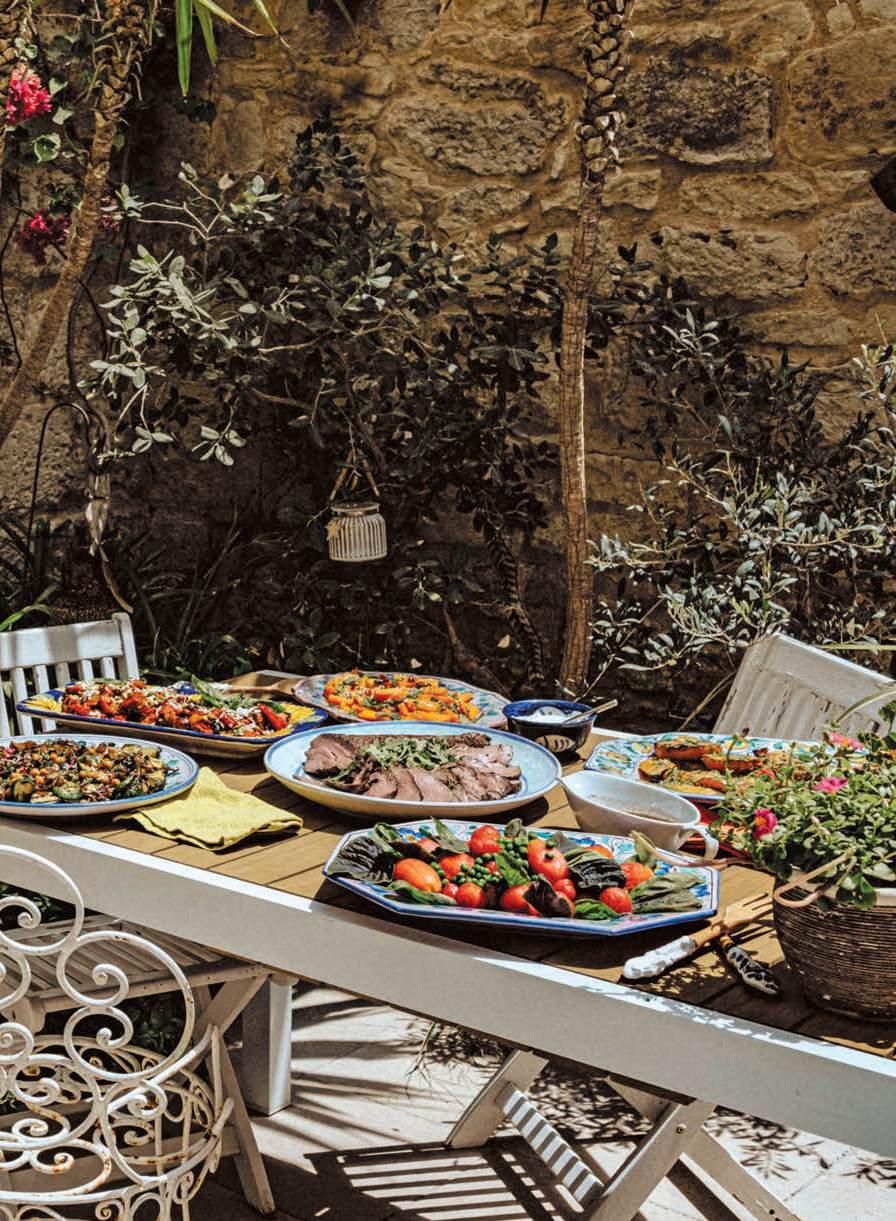

This is a simple and relatively easy dish to take centre stage in your set up. The main secret is the quality of your ingredients. Prime aged beef might be costly, but it’s good to splash out for that special occasion. It’s very important to make this the day before serving to let the meat rest completely. You can accompany the beef with the cooking liquour, serving it either hot or cold.

SERVES: 12
PREPARATION AND COOKING: 45 minutes plus 1 day resting OVEN TEMPERATURE: 185°C (fan)
RECOMMENDED WINE: This dish can work with a variety of red wines, but seeing that is often served at room temperature during the warmer weather, I’d choose a wine that is medium bodied and slightly chilled in the fridge for 15 minutes. Richer-styled New World Pinot Noirs could work like a charm, as could a premium Merlot-based St Emilion or Syrah.
YOU WILL NEED:
1 whole fresh prime aged fillet of beef approx. 1.4kg salt and cracked pepper a few sprigs fresh thyme
1 tablespoon Maltese honey
4 cloves garlic, finely chopped 450ml Port wine extra-virgin olive oil
1. Pre-heat the oven to 185°C (fan operated).
2. Place the meat in an oven dish and season it well with salt and pepper. Pull the leaves from a few sprigs of thyme and scatter them over the beef. Drizzle the meat with the honey and, using clean hands, massage the seasonings into the meat. Add the garlic, Port, and a good glug of extra-virgin olive oil all over.
3. Heat a griddle well then sear the beef all over for a few minutes to just colour and brown the meat. This will produce much smoke in your kitchen, so ventilate the room well.
4. Transfer the meat back to the dish with the Port marinade. Cover this with baking paper then seal the dish with foil. Roast in the preheated oven for 20 minutes then remove the dish from the oven and cool the meat to room temperature as quickly as possible. Leave it to rest in the fridge overnight.
5. The next day simply slice the meat thinly and place it on a serving platter. Let it get to room temperature before serving.

I have tried making caponata with grilled or roasted vegetables, but the result is a far cry from the traditional method of deep frying. Try this at least once.
SERVES: 10-12 as a side dish
PREPARATION AND COOKING: 60 minutes
RECOMMENDED WINE: This dish can work with a variety of wine styles. You may consider the main protein if this dish will be served alongside a main dish. An Italian Rosé could be the perfect balance of play between richness and freshness of this Sicilian dish. If you prefer a white wine, keep it fresh and zingy such as a Tuscany style Vermentino with its saline backbone, or, if going for red, a traditional, good quality Chianti Classico works beautifully.
YOU WILL NEED:
vegetable oil for deep frying
2 aubergines, skin on, cut into 2.5cm cubes
4 sticks celery, diced
2 sweet red peppers, chopped roughly
3 carrots, peeled and cut into 2.5cm dice
extra-virgin olive oil
1 large onion, peeled and chopped
4 cloves garlic, peeled and chopped chili
1 heaped tablespoon good quality, thick tomato paste
4 tomatoes, chopped
30ml white wine vinegar
1 tablespoon honey
2 tablespoon capers, rinsed
14 black olives, roughly chopped
80g raisins
salt and pepper
basil, a good handful parsley, a handful, chopped 120g lightly toasted pistachio nuts
150g ricotta salata, coarsely grated
1. Fill a deep fryer with clean vegetable oil. Fry the aubergines, celery, sweet peppers and carrots separately, and in small batches if necessary, till they are golden. It’s important then to drain as much of the oil out of the vegetables as possible. To do this, I leave them to drain in a colander.
2. In a large, deep pot heat a good glug of extra-virgin olive oil and stir fry the onion with the garlic and chili to soften it. When the onion starts to brown, add the tomato paste and fry it for about 3 minutes before adding the chopped tomatoes. Stir well.
3. Add the vinegar and cook for 1 minute. Add the honey and stir it in.
4. Add all the deep fried vegetables to the pot and mix them gently. Cook on medium heat for 5 minutes then turn off the heat.
5. Add the capers, black olives, and raisins and season with salt and pepper. Add the chopped herbs and the pistachio nuts, reserving some to sprinkle on the top.
6. Serve at room temperature sprinkled with the ricotta salata and the reserved pistachio nuts.


Rose water, cumin, cinnamon, mint and pomegranate make this salad fragrant and inviting.
SERVES 6-8
PREPARATION AND COOKING TIME: 20 minutes
RECOMMENDED WINE: This dish screams rosé. If you enjoy a little sweetness in your wine, this is the perfect dish. You could opt for Moscato rosé or Grenache based rosé. If you prefer the drier style, you can’t go wrong with the light and zingy Provençal style.
YOU WILL NEED:
4 large carrots, peeled
½ teaspoon cumin seeds
1 cinnamon stick
3 tablespoons extra-virgin olive oil
salt and pepper
1 teaspoon pure rose water extract (no space for artificial substitutes here)
2 tablespoons pomegranate arils
sesame seeds
fresh mint leaves
1. Cut the carrots into sticks. Heat a large, deepish frying pan and dry fry the cumin seeds and cinnamon for a minute to toast them, then transfer them to a plate.
2. Add the extra-virgin olive oil and the carrots. Season with salt and pepper. Add 2 tablespoons of water. Cover the pan and cook for 2 minutes.
3. Next, add the toasted spices and mix well. Cover the pan again and cook for a further 3 minutes. The carrots should be quite firm and retain a crunch. Let them cool down before adding the rose water.
4. Serve the carrots on a platter with the pomegranate arils and some sesame seeds scattered over. Garnish with plenty of fresh mint leaves.

This salad is not only colourful but also delightfully reminiscent of summer but without the heat. It goes without saying that Maltese tomatoes are a must for this.
SERVES: 6
PREPARATION AND COOKING: 15 minutes
RECOMMENDED WINE: Opt for a white wine that will not overpower the delicate and wonderful flavours of the dish. I would choose a refreshing, unoaked white wine such as a Pinot Grigio or Sauvignon Blanc. Herbaceous wines such as the Austrian Grüner Veltliner could also work perfectly.
YOU WILL NEED:
6 plum tomatoes (żenguli)
12 cherry tomatoes
1 teaspoon sugar
sea salt and pepper
150g garden peas
assorted different coloured basil leaves
1. Bring a small pot of water to the boil then blanch the tomatoes for a few seconds before peeling them.
2. Use the same hot water to blanch the peas, then plunge them into cold water to stop them cooking.
3. Place the peeled tomatoes onto a flat serving platter and sprinkle them with the sugar, salt and pepper. Scatter the peas over, then decorate with the coloured basil leaves.

I love serving pumpkin as a side dish as I find that our local qargħa ħamra is so overlooked and under-used. Treating it simply, as in the following recipe, lets its subtle flavour shine.
SERVES: 6-8
PREPARATION AND COOKING: 45 minutes
RECOMMENDED WINE: This dish can work with structured white wines as well as lighter reds. Well-rounded, richer whites such as a Côtes du Rhône Blanc or richer styled Pouilly Fumé can work beautifully. Conversely a lightly chilled Côtes du Rhône Rouge or refreshing Chianti Classico can also pair perfectly.
YOU WILL NEED: 800g piece local pumpkin qargħa ħamra salt semolina olive oil to fry parsley
300g Greek yoghurt
1 teaspoon black sesame seeds
1 tablespoon sesame oil
1. Cut the pumpkin into 1cm thick slices and sprinkle with salt. Leave the salted pumpkin to rest for 15 minutes.
2. Place semolina into a deep plate and roll the pumpkin in it to coat it well.
3. Heat a good amount of olive oil in a non-stick frying pan. Fry the pumpkin on moderate heat in batches till golden brown then drain on kitchen towel.
4. Transfer the pumpkin to a serving dish and garnish it simply with freshly chopped parsley.
5. Mix the yoghurt with the sesame seeds and sesame oil and serve it in a bowl beside the pumpkin.







More summer-into-autumn flavours and textures here.
SERVES: 6-8
PREPARATION AND COOKING: 45 minutes
OVEN TEMPERATURE: 220°C
RECOMMENDED WINE: Think crisp, mineral Italian white wines such as Pinot Grigio, Falanghina, grillo or Pecorino. These light, affordable white wines work wonders with these dishes. Just remember that spending a few more euros usually give you way bigger returns on quality.
YOU WILL NEED:
1 tin chickpeas, drained
2 teaspoons smoked paprika
1 teaspoon chilli powder
½ teaspoon sugar
½ teaspoon salt
½ teaspoon pepper
2 tablespoons vegetable oil
4 zucchini, cut into rounds
2 tablespoons extra-virgin olive oil
salt and pepper
2 tablespoons extra-virgin olive oil
2 red onions, peeled and sliced salt
2 fresh bay leaves parsley
edible flowers
1. Heat the oven to 220°C. Dry the chickpeas very well using clean kitchen cloths and transfer them to a bowl. Season them with the paprika, chilli, sugar, salt and pepper and mix with the oil.
2. Line a baking sheet with baking paper. Pour the chickpeas onto the baking sheet and roast them for 30 minutes, shaking the tray once or twice during the process. When done, set the tray aside to cool.
3. Heat the grill. Toss the zucchini with the oil and salt then grill them lightly for 2 minutes on each side.
4. For the onions, heat the extra-virgin olive oil in a pot. Add the sliced onions, salt and bay leaves and stir fry for 15 minutes till browned. Discard the bay leaves.
5. To serve, place the grilled zucchini onto a serving platter and top with the browned onions. Just before serving, scatter the crispy chickpeas all over and garnish them with chopped parsley and edible flowers.



Is that rain I see outside? I’ve already gathered the firewood, put my favourite beef stew and dumplings on the stove, grabbed my warmest jersey and poured myself a glass of delicious Bordeaux.
Ok, I’ve probably jumped the gun. In fact, the best I can probably do is close the curtains and reduce the airconditioning to a cool 16 degrees, but I’m still pouring myself that tasty glass of wine I’ve been dreaming about, because I have truly had enough of waiting to pop open some delightfully rich, red wine.
This summer was a scorcher. The over-abundance of sunshine on terraces, the clink of ice in tall glasses, and the refreshingly pale whites that accompany it – Sauvignon Blancs, Rieslings, and cold Albariños – seem to exist only for those moments, as if nature intended them for the very specific purpose of refreshing the sun-drenched palate.
The only red wines that can still remain fresh in the summer heat fall towards the lighter end of the scale. Definitely, there’s nothing wrong with lighter reds. In fact, I discovered a yummy, biodynamic Fleurie, Beaujolais Cru 2018 which I chilled to around 15 degrees Celsius every time
I wanted to satisfy my desire for something red and complex. It more than did the trick.
And yet, when autumn taps us on the shoulder with a brisk gust of wind, we remember that it’s not just the weather that changes, but also our tastes – an almost primal recognition that it’s time for a different kind of comfort.
I want to get back to some of the heartier food and wines that I’ve missed over the past four months. Fuller-bodied wines with higher alcohol and richer flavours offer that satisfying or even soothing experience. Just like folding away our summer towels for the winter, the Provence rosés and refreshing Sauvignon Blancs are quietly edged out as we seek the warm and fuzzy feelings from more structured, higher alcohol wines that are particularly appealing when it’s cold and chilly outside. Strangely enough, our senses change with the season.
We are attuned more to our sense of smell in winter, particularly when it comes to food and wine, because strong scents become more obvious to detect. More so, the part of the brain that controls the olfactory system – our sense of smell – is also responsible for long term memories and often


the food we crave or desire in the cooler months has a strong emotional connection. Food and the smells associated with food and wine has the ability to cheer us up, and it is those very scents that we seek out to make us feel good.
Now, this transition isn’t some whimsical happenstance. It’s instinctual, hardwired into our senses and taste buds. Just as our wardrobes gradually shed linen shirts for woollen jumpers, our palates also crave something that wraps them in warmth and richness.
Wine, you see, like fashion, follows the seasons. And in the same way that your summer linen shirt loses its appeal when the first cold breeze hits, a crisp, citrusy white can feel strangely out of place when the days get shorter and the nights get longer.
With this shift, the foods we crave instinctively change. The salads that once seemed the epitome of fresh perfection give way to roasted vegetables, stews, and meats that are tenderly braised. These are dishes that beg for perfect accompaniment. They beg for big, bold reds.
So which reds are these? Wines that are structured, complex and with that edgy sort of personality are the type that are appropriate to your mood in the dimmer lights by the fireplace. You wouldn’t want a Pinot Grigio with your wild mushroom and truffle risotto any more than you’d pair your flipflops with a raincoat.
The cool weather calls for wines that are structured, brooding and complex, that take themselves seriously. But what makes a wine feel more appropriate in autumn, you may ask? It’s more than just the temperature, though of course the joy of sipping something a degree or two above room temperature is a significant part of the pleasure. No, it’s in the structure, the weight, the way the wine wraps itself around your tongue like a velvet scarf on a chilly day.
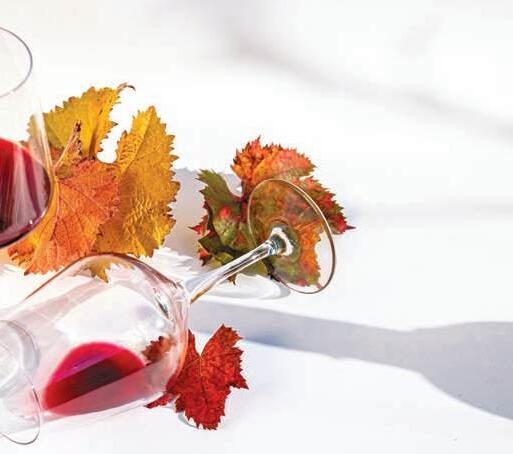
The part of the brain that controls the olfactory system is also responsible for long term memories.
Cooler weather brings out those velvety wines like Merlot or Cabernet Sauvignon and their respective blends, often referred to as Bordeaux blends.
You’re no longer looking for tart and zippy wines anymore; you’re looking for something that commands presence. You want depth, tannins that grip and flavours that linger. You’re looking for an experience that offers something to think about long after the glass has been set down. The Italians aptly call these wines “vino de meditazione” (wines for meditation).
Cooler weather brings out those velvety wines like Merlot or Cabernet Sauvignon and their respective blends, often referred to as Bordeaux blends. They come across as heavy and simply too much during the summer months, but as autumn comes along, they start to feel just right. There’s something wonderfully complex and intense about their blackberry, plum, dark cherry, and chocolate flavours. It’s the wine equivalent of putting on your favourite soft and cosy jumper after a full day out in the blistering cold.
I also think about more mature versions of these wines that have that power of taking you back in time. The flavours and smells from mature Cabernet Sauvignon or Merlot blends have incredible similarities to the autumn and winter smells we know – a forest trail of complex aromas of wet leaves, recently ploughed earth, rolling tobacco, and leather. These are wines that demand your undivided attention.
We must not forget the elegant and substantial Pinot Noir. The perfect transitional wine, with its red fruit profile, silky texture and enough body to stand up to those early winter dishes, without overpowering them, is equally versatile with duck as it is with a hearty casserole – a wine that is perfectly able to handle the transition between the last of the warm days and the cool evenings.
Of course, there will be a time for Syrah (or Shiraz, depending on which hemisphere it’s from) that fully embraces winter. Its smokey, spicy and full bodied character works so wonderfully well with the richest winter foods. And we cannot fail to mention the Primitivo de Manduria – that staple southern Italian wine that can be considered the Maltese version of comfort food in a glass. The slight pop of sweetness from the residual sugar of these mega-high alcohol wines gives a heartwarming feeling that I get when around the Christmas tree on a chilly Christmas day while the children jump with glee as they open their presents. And in the same way that Christmas day give you that lovely, cosy feeling, I can only admit to handling both Christmas day and Primitivo di Manduria once a year.
The rain outside has slowed to a mere drizzle, but the stiff breeze has cooled the air. As the temperature continues to drop, remember it’s time to start shifting your wine habits. I can’t wait to embrace the boldness of winter reds, savour their richness and give them their moment to be enjoyed. Summer whites have their place in my cellar and have done their job for the past few months, but I’m happily swapping the case of Sauvignon Blanc for Cabernet Sauvignon this coming weekend.
Andrew Azzopardi is a wine specialist certified by the Wines and Spirit Education Trust.


Elevate your Sunday dining experience with an extraordinary buffet lunch at the acclaimed Fra Martino Restaurant, nestled in the Corinthia St George’s Bay, St Julian’s. Back by popular demand for the season, this isn’t your average buffet - it’s a culinary journey designed to satisfy even the most selective food enthusiasts. Indulge in a lavish spread, accompanied by first-class service, a welcoming ambiance, and a diverse menu that promises to delight every palate.

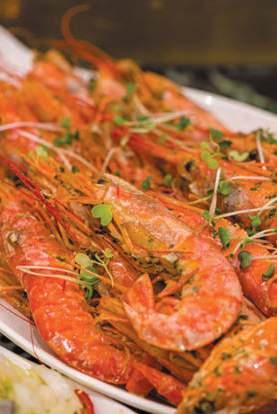


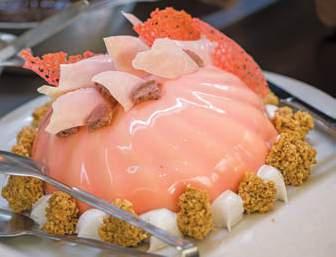
Thebuffet boasts an extensive selection across multiple food stations. Start your afternoon with Mediterraneaninspired antipasti and soups, setting the stage for the feast ahead. At our live cooking stations, watch our chefs craft your favorite homemade pasta dishes, tailored to your taste. Choose from fresh ingredients like bacon, mushrooms, prawns, fresh cream, tomato sauce, and white wine to create a pasta dish that’s perfectly you. New this season, enjoy the live paella cooking station, where you can savour a classic Spanish dish brimming with prawns, seafood, chicken, chorizo sausage, and more.
Expand your horizons at the Authentic Indian Station, featuring an array of flavourful dishes such as Prawn Jinga Goa, lamb Rogan Josh, butter chicken, and vegetable biryani, paired with aromatic rice. Complement your meal with crispy Asian fritters and chutneys that bring every bite to life.
No Sunday lunch would be complete without a carvery. Fra Martino offers a mouth-watering selection, from slowroasted beef ribeye with Yorkshire pudding to a honeyglazed leg of gammon. The Chafing Station also features

hot dishes like grilled seabream, braised lamb shanks, and crispy pork belly, ensuring there’s something for everyone. For the younger guests, a dedicated children’s table features favorites like chicken nuggets, Cumberland sausage, potato smiles, and fish fingers, followed by sweet treats like marshmallows and cupcakes.
Adults can indulge in a dessert spread that’s as decadent as it is varied, with homemade delights ranging from flans, tarts, and gâteaux to pies, cakes, crêpes, and ice cream—all crafted by Fra Martino’s talented pastry chefs.
Join us for a leisurely and stress-free Sunday from 12:30pm to 3:00pm. Prices start at just €42 for adults and €21 for children, while children under five dine for free. The experience includes free-flowing local water, soft drinks, and juices, as well as complimentary parking and live entertainment.
Due to high demand, advance booking is highly recommended. Reserve your table today by calling +356 2370 0000 or emailing framartino.stgeorges@corinthia.com.


Cake and biscuits make pausing a pleasure. Pair these with strong tea or coffee or a herbal infusion for moments of self-indulgence.
Photography: Corinne Vella
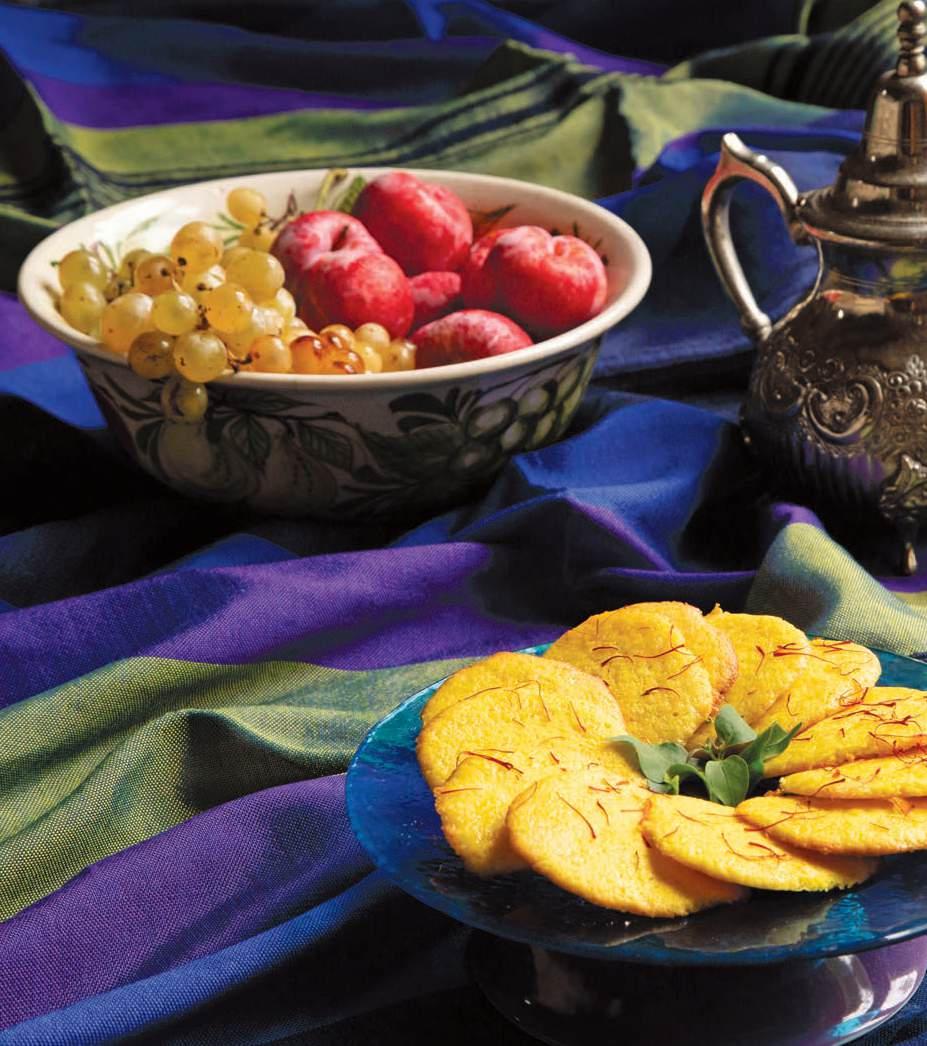
Combine the luxurious flavour of saffron with the natural sweetness of honey for an indulgent treat. The delicate floral notes of saffron infuse each biscuit with a rich, golden colour, while the honey adds a warm, caramel-like sweetness.
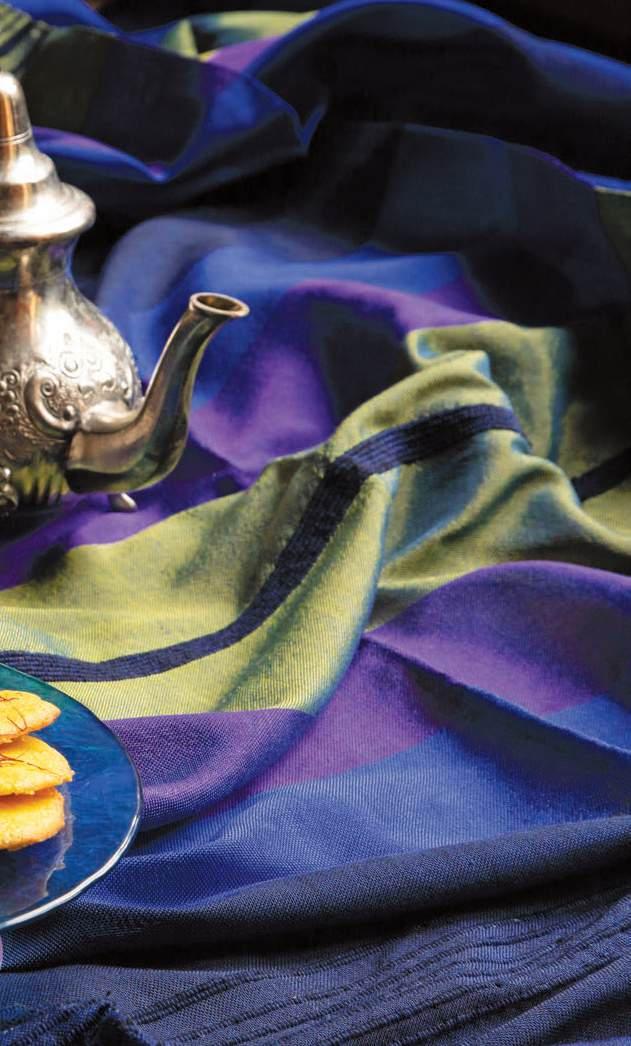
Makes 20-24 pieces
Preparation and cooking: 45 minutes
YOU WILL NEED:
a good pinch of saffron strands
140g unsalted butter
2 eggs
1 tablespoon orange blossom honey
100 g white caster sugar
½ teaspoon vanilla extract
225 g flour
1½ teaspoons baking powder
¼ teaspoon salt
1. Soak the saffron threads in two tablespoons of hot water in a glass and set it aside to steep for a few minutes.
2. Beat the butter and sugar together until light and fluffy. Add the honey and beat again. Whisk the eggs and vanilla together in a separate bowl, then whisk them into the butter mixture. Pour in the cooled saffron infusion and whisk the mixture lightly until it’s combined.
3. Sift the flour into a bowl and stir in the baking powder and salt. Sprinkle the mixture a little at a time into the mixing bowl and use a blunt knife or spatula to fold it in. Repeat until all the flour and baking powder is combined into a rough dough. It should be very soft and a bit sticky. If it’s too stiff, add drops of lemon juice until it thins out.
4. Cover the bowl and chill the dough in the fridge for around an hour. A few minutes before the hour is up, line two baking trays with non-stick paper and preheat the oven to 180°C.
5. Using 2 large teaspoons, scoop up some of the dough and shape it into in a small disc on the lined baking tray. Repeat until all the mixture is used up, leaving plenty of space in between each disc to allow the mixture to spread while baking.
6. Place the baking trays in the middle of the preheated oven and bake the biscuits for 10-12 minutes, until their edges start to turn golden brown and the surface springs back when lightly pressed.
7. Transfer the biscuits to a cooling rack to cool down for a few minutes. Serve these warm or cold with mint tea.

Bright and zesty, these crumbly biscuits are infused with the tangy flavour of fresh lemons, offering a delightful balance of sweetness and citrusy sharpness.
Makes 20 pieces
Preparation and cooking: 60 minutes
YOU WILL NEED:
200g granulated sugar
113g unsalted butter • 2 eggs
300g plain flour • ¼ teaspoon salt
1 ½ teaspoons baking powder
4 tablespoons fresh lemon zest
1½ tablespoons fresh lemon juice
½ teaspoon vanilla extract
¼ cup powdered sugar, for dusting
1. Let the butter soften to room temperature then beat it in a bowl with the sugar and lemon zest until it’s light and fluffy.
2. In a separate bowl, combine the eggs with the vanilla and lemon juice and slowly pour the liquid into the butter mixture, beating it in slowly.
3. Sift the flour into a bowl and stir in the baking powder and salt. Fold the dry mix into the batter a little at a time until it combines into a semifirm, slightly sticky dough. Cover the bowl and chill it for 30-40 minutes.
4. Preheat the oven to 175°C and line two baking trays with nonstick paper. Sift some powdered sugar into a small bowl.
5. Use a dessert spoon to scoop up some of the dough. Lightly roll it into a ball between your palms. Drop the dough ball into the powdered sugar and roll it around until it’s completely coated, then place the dusted dough onto the baking parchment. Repeat until all the dough is used up, leaving a couple of inches in between each portion.
6. Bake in the preheated oven for 11-12 minutes. They’re done when the centre of the biscuit is firm (test this by pressing lightly) and the base of the biscuits starts to turn golden. Transfer the biscuits to a cooling rack. Serve them stacked on a platter sprinkled with powdered sugar.
With their signature scalloped shape and tender, sponge-like texture, these madeleines offer a vibrant, tangy sweetness in every bite. They’re easy to make and even easier to enjoy. Using a silicon madeleine pan makes things even easier as it avoids the need for fiddly oiling or buttering the pan before baking.

Makes 12-14 pieces
Preparation and cooking: 45 minutes (excluding chilling time)
YOU WILL NEED:
135g unsalted butter
125g plain flour
1 teaspoon baking powder
3 eggs, room temperature
140g caster sugar
1 teaspoon salt
1 teaspoon olive oil
50ml full fat milk
2 teaspoons orange blossom honey
2 teaspoons vanilla extract
1 tablespoon orange zest
1 tablespoon lemon zest
powdered sugar for dusting
1. Melt the butter by warming it lightly in a small pan. When it starts to froth, let it cook until it starts to brown. Once it has a pleasant caramel colour and a nutty scent, set the pan aside to cool down a little.
2. Sift the flour and baking powder into a mixing bowl and stir in the salt. In a separate bowl, beat the eggs and sugar together on a high speed until they become foamy and the colour turns pale. Whisk the flour mix into the batter, one third at a time ensuring it is well combined before adding any more.
3. Pour the cooled brown butter into the flour mixture and use a spatula to mix it in. The batter should be thin. Don’t scrape out the pan as
you’ll transfer the burnt milk solids that are stuck to it. Cover the bowl and chill it at least overnight. It will keep well for up to three days in the fridge.
4. Preheat the oven to 200°C (or 180°C, if fan-operated) for around 30 minutes. Use an oven thermometer to check the temperature is correct, or the cakes will be a flop.
5. Remove the batter from the fridge just before baking. Fill each scallop shape in the madeleine pan until just below the rim. Bake in the preheated oven until lightly golden (around 10 minutes).
6. Serve the madeleines warm, dusted with icing sugar.

This gently fragrant cake dressed with luscious homemade fig leaf syrup carries the taste of late summer into the early days of autumn.
Serves 5-6
Preparation and cooking: 60 minutes
FOR THE CAKE:
120ml milk
110g unsalted butter
2 eggs
200g white caster sugar
120g plain flour
120g ground almonds
2 tablespoons baking powder
6-8 black figs
FOR THE SYRUP:
3-4 fresh fig leaves
2 tablespoons caster sugar
9 tablespoons water
1. First, make the fig leaf syrup. Wash the fig leaves under running water and pat them dry. Trim off the woody stem. Toast them lightly on a hot grill pan for around a minute, turning them to stop them burning.
2. Put the water and sugar into a pan and stir until the sugar dissolves. Add the fig leaves and heat the mixture until it starts to boil, then let it simmer until the liquid thickens into a syrup (around 4 minutes). Let the mixture cool, then strain it to remove the fig leaves.
3. Grease a deep cake tin with butter and coat it with flour. Preheat the oven to 175°C.
4. Wash, trim and halve the figs vertically. In a small pan, warm the butter and milk until the butter has completely melted. Stir the mixture, remove the pan from the heat and set it aside to cool slightly.
5. Sift the flour and baking powder into a bowl and stir in the ground almonds. In a separate mixing bowl, beat the eggs and sugar together until the mixture starts to froth slightly. Fold in the flour and ground almond mix. Pour in the milk and butter mixture (it should be warm, but not hot) and stir it in well until the batter is smooth and slightly runny.
6. Pour the batter into the prepared cake tin and place the fig halves on the surface, cut side up. Place the cake tin in the centre of the oven and bake for around 40 minutes. It’s ready when an inserted cocktail stick comes out clean.
7. Remove the cake from the oven, prick the surface lightly, and slowly pour over the syrup allowing it to soak in. Let the cake stand for around 10 minutes to cool slightly, then remove it from the tin and set it on a wire rack to cool down, or serve it lightly warm, if you prefer.



With their satisfying crunch and chewy centre, these macaroons are a delicious accompaniment to after-lunch coffee or served as a snack at teatime.
Makes 24 pieces
Preparation and cooking: 35-40 minutes
YOU WILL NEED:
80g ground almonds
130g green pistachios, coarsely ground
100g granulated sugar
1 tablespoon orange blossom honey
½ teaspoon vanilla extract
1 egg white
60g icing sugar, sifted zest of 1 lemon
TOPPING:
a loose handful green pistachio slivers
1. Preheat the oven to 175°C and line 2 baking trays with non-stick paper.
2. Put the ground almonds and ground pistachios into a large bowl and with the sugar and stir together. Add the vanilla and lemon zest and stir again.
3. Lightly beat the egg white with the honey and then stir it into the nut mixture until it combines into a stiff paste.
4. Put the sifted icing sugar into a small bowl. Scoop up some of the dough, shape it into a ball and then roll it in the sugar until it is well coated. Place it on the lined baking tray. Repeat until all the mixture is used up, leaving a couple of inches in between.
5. Use a glass to flatten the dough balls into evensized discs. Wipe the base of the glass occasionally.
6. Press a few pistachino slivers onto the surface of each dough disc and bake in the preheated oven until the biscuits only just start to turn golden (around 15 minutes). Let them cool down before serving.

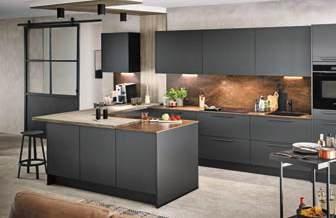

Antares Cucine allows for complete customisation, offering a wide variety of finishes that cater not only to personal taste but also to affordability. Whether you seek a sleek, modern look or a more classic design, we can provide options tailored to your budget without sacrificing elegance or quality.
Nobilia, on the other hand, focuses on durability, creating kitchens that stand the test of time. Built to endure the demands of everyday use while maintaining their timeless appeal, Nobilia kitchens are the epitome of long-lasting quality.
Throughout the month of October, we are offering up to 30% off our kitchen ranges, along with complimentary upgrades on selected features. This is the perfect opportunity to invest in a kitchen that reflects your style and budget while delivering top-quality craftsmanship.
At Oxford House, we take pride in being a one-stop shop. We are synonymous with world-class appliances, particularly Bosch and Neff, ensuring that the kitchens we design are equipped with the very best. Our service goes beyond just supplying furniture and appliances; we provide a comprehensive solution by designing kitchens where every appliance fits seamlessly.
Transform your home with a kitchen that combines elegance, affordability, and enduring quality, with the trusted support of Oxford House.






When it comes to furnishing your home, especially the heart of it - your kitchenOxford House offers a range of sophisticated, top-quality options to suit every style and budget. We are proud to present a selection of Italian and German kitchens that combine style, functionality, and durability.






How two outdated 1960s maisonettes were redesigned as a contemporary take on a Maltese townhouse
Interior architecture and design: Atmosphere Design
Photography: Mark Sapienza

The welcoming façade reinterprets elements of traditional Maltese townhouses: rough-hewn travertine recalls stone façades and the design of the main door to the house retains the typical arch but plays on the use of vertical slats and rounded handles in a bespoke design.
WhenAtmosphere Design took on two Kappara maisonettes built in the 1960s, the interiors hadn’t been refurbished in long while and the fabric of the building itself was in a dismal state, with some ceilings in need of demolition and replacement. “The maisonettes had no outstanding features,” says Clive Falzon. “However, we did aim to regenerate and reinterpret the building’s existing façade.”


The small rooms and basement of the two original maisonettes have been opened up into a welcoming space flooded with natural light. Light fittings by OK home complement the contemporary look.

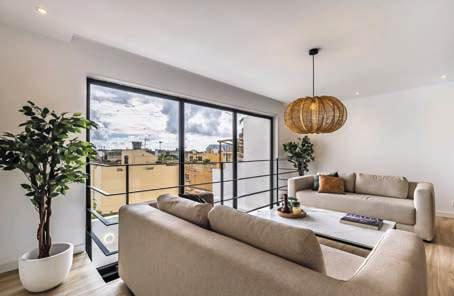
The designers acquired the properties intending to redesign them for eventual resale to new owners. “As they were located in a villa area, when Dominique and I were developing the design concept we thought of integrating the two maisonettes into a contemporary house, to enable the whole property to regain its proper value and place among the neighbouring buildings,” Clive says. “We wanted to respect the overall architecture of the property, particularly the façade, but we also wanted to infuse the home with a modern touch and a fresh look that is better suited to contemporary lifestyles.”
The underlying philosophy of the designers’ approach is rooted in the notion that old buildings present unique and creative opportunities for interior architecture and design. It is a way of thinking that is environmentally sustainable and desirable, given that demolition and reconstruction ultimately uses up more energy and resources than refurbishment.


In the living area on the newly opened up lower level, a raw concrete ceiling contrasts with the whitewashed walls. Contemporary furniture by Kave Home, supplied by FORM, in neutral tones adds tactile and visual texture. The dark tones of the loose furniture and sofa frame complement the colour accent of the strip lighting by OK Home and the apertures by Prodoor.
“The building could easily have been dismissed as a lost cause, warranting complete demolition,” Clive explains.
“Instead, we considered this a challenging opportunity for restoration and breathing new life into its spatial layout and design.”

Given the relatively small footprint of the property, making good use of the available space was key to creating a comfortable residence with all the principal amenities one could want in a villa area. The previous layout was typical of townhouses with relatively small rooms. To combine the two maisonettes into one residence and create a comfortable living environment with good spatial flow required structural alterations.
“We opened up a number of walls, particularly at the ground floor level, and also linked the space to a neglected room beneath this floor,” the designer explains. “Light was another major focal point. The structural changes we proposed were intended to maximise the use of space and influx of natural light.”


The house has been designed to create an impact on visitors from the moment one approaches it. The façade itself has been reimagined as an innovative take on the look of a traditional Maltese townhouse. This is reflected in several of its elements, such as the main door which retains its typical arched feature but simultaneously plays on the use of vertical slats and rounded bespoke handles. It is finished in a muted green colour evoking a sense of style and tranquillity. The traditional limestone wall has been given a contemporary interpretation through the use of split face travertine cladding.
Similarly, the original balcony has been redesigned as a spin off the traditional Maltese gallarija – a sleek black metal frame which protrudes from the façade suggesting an enclosed balcony. The same design concept was applied to the two arched windows on the lower floor, giving the façade a contemporary look that is rooted in tradition.
“When we designed the front door, we aimed to create a modern twist to the travertine-clad wall with its vertical lines,” Clive says. “We also designed the customised door handles
to complement the arched apertures on the façade, giving it a contemporary touch.”
As one enters the house, the open plan area at ground floor level is a captivating scene. Despite the small footprint of the property, the reimagined space presents visitors with a surprisingly large open plan area. A stylish kitchen and dining area occupy the first section of the floor, but the eye is immediately drawn to the floating floor at the far end. This hosts a lounge area that is a beautiful architectural feature in itself and an ideal place for relaxation, and which is distinct from but connected to the rest of the living space.
On approaching the split-level sitting room, a sizeable underlying living room just a few steps beneath, with a backyard right behind it, emerges into view. The previously neglected room in a formerly closed off basement has been integrated into the open plan space through intentional structural changes designed to create a seamless transition between the kitchen-dining area, the sitting room, and the living room. A double height aperture linking both the sitting room and the underlying living room further emphasises the seamless flow.
“We positioned the double height aperture intentionally as the main channel of natural light to the ground floor as this part of the house is southfacing,” Clive says. “This has resulted in a wonderful influx of natural light across the entire ground floor area.”
The designers’ emphasis on natural lighting is visible in the way they planned the staircase and overlying skylight. The stairs linking the first and second floors consist of overlying metal structures, with treads and risers fashioned out of perforated steel sheets. This design element hinges on the skylight which the designers introduced at roof level above the sets of stairs, allowing natural light to travel all the way down through the second, first, and ground floors.
The custom-built metal staircase is a focal point, physically and visually linking all levels of the open-plan structure. The perforated treads and risers are designed to allow natural light to filter through.



Above: The geometric lines of the customised railing echo the linearity of the flooring and ceiling. The rough woodgrain finish just beneath the roof provides textural contrast to the smoothness of the floor.
“We wanted to achieve a strong sense of harmony, flow, and consistency in our design,” Clive says. This is reflected in the designers’ choice of materials, colours, and design elements. Natural materials and colours create a welcoming and serene environment in the open spaces, complemented by the use of textured fabrics throughout. In some areas, a raw concrete finish contrasts with the white ceilings. Metal railings with a sleek linear look have been used instead of the more traditional wrought iron railings.
A skylight positioned above the perforated stairs draws light down through to the lower floors of the building.



There are touches of timber, a raw concrete feel, and accents of rough travertine, including the cladding of one of the walls in the open plan area that is a tribute to the limestone walls of traditional townhouses. The use of a muted green finish on some walls evokes a peaceful and comforting ambience. Some of the ceilings which needed to be re-built were left in their raw state, which contrasts beautifully with the cleaner finishes.
Overall, the play of materials and finishes are a visual feast, revealing a well thought out combination of contemporary features rooted in traditional townhouse architecture.
The bathrooms with tiling and sanitary ware by Josies Bathrooms have similar lines but different design moods. In one (top), the high tonal contrast and bold veining of the marble backsplash create a dramatic look. In another (right) soft, muted natural tones generate a feeling of calm.


30m² Wall and Floor Tiles
Combined WC
Wall hung WHB
80x80 Tempered Glass
Shower Cubicle plus tray
Chrome Mixers
*Carrying a 5-year Guarantee

vernacular Gozo house reimagined with a minimalist look
Interior design: Forma Design Studio
Photography: Ramon Portelli

The vernacular house dates back to the pre-world war II period. For years it had stood vacant in a quiet road in the urban conservation area in Xewkija, Gozo, until Forma Design Studio discovered it and saw the opportunity it offered. “It is south-facing, and was potentially full of natural light,” she says. “I wanted to create something calming, which you have time to digest and enjoy to the fullest.” The result is a modern minimalist and organic house with sleek design and clean lines enhanced by minimalist furniture but with a warm and clean aesthetic.

The original two-storey house enjoyed a double fronted façade with two loġġoġ, internal arches, xorok and niches. While the traditional elements and rooms of the house have been preserved, it has been transformed into a minimalist home with a sleek, clean look, offering a tranquil and calm feeling. Reimagining the building for contemporary living took a skillful blending of the old and new in the detailed building designs, including a new top floor which enjoys views of Xewkija’s prominent rotunda.
Indoors, the layout has been redesigned to enhance the flow and to create a sense of openness. An aperture has been opened to the courtyard – to admit more light and connect the outdoor and indoor space, and floor to ceiling doors create a beautiful flow and sense of depth. Wood-cladded walls enhance the minimal and clean look by integrating hidden doors. Custom-made pieces complement the attention to detail and the choice of materials, colours and textures.

Right and above: Cement boards are strong and durable, making them an excellent choice in older houses where damp issues may exist. They resist warping, rotting, and degradation, and this durability extends the lifespan of walls, floors, or any surface they’re applied to. Used here for the walls and floors, Marmox multiboard from Beta Centre is a fully waterproof, light weight, insulating board, easy to cut with minimal dust, and can be tiled, plastered or rendered, both indoors and outdoors. The XPS foam core of Marmox multiboards provides effective thermal insulation, and they can be used to insulate walls, floors, and ceilings, reducing heat transfer and improving energy efficiency. They are the perfect solution for insulating roofs and exterior walls; and covering damp, flaky walls around basements, swimming pools, and wet rooms. Since the loading capacityexceeds100kg/m2,Marmoxmultiboardsarealsowidelyusedwithunderfloorheatingsystemsandtilescanbeglueddirectlytotheboard in vertical and horizontal applications.
In the dining room, the muted, neutral colour palette of the walls, curtains, and flooring allows the stone arches to take centre stage. The warmth of the wooden furniture complements the stone’s earthy tones. Lighting fixtures supplied by ESS were selected to highlight the arches. The sleek pendant light completes the look without oveshadowing the dramatic stonework, balancing old-world charm with contemporary functionality.



Thesensitivity of the project environment meant all essential demolition work had to be carried out by hand. “We make considerable investments in creating new, conventional features in a repurposed building while safeguarding and preserving our Maltese architectural heritage,” explains the interior designer Marienica Haber, founder of Forma Design Studio. “The experience of our architectural and design team is in the conservation and preservation of historic structures while taking into account the building’s architectural identity and historical context.”
Shaping the project plans meant thinking about the interior design from the start. “We had to consider how to blend the old with the new, and also how to incorporate as much as natural light as possible as, previously, the house interior was very dull,” the architect says. “Throughout the project I wanted to create a lot of linearity and curves, which can be seen in the gyspum staircase, the design of the curved bed, and the kitchen cabinets which are in linear layout.”

In this house, the minimalist, sleek lines of the cabinetry and lighting reflect a more contemporary style than is typically found in Mediterranean homes. The use of black track lighting and contemporary sconces supplied by ESS is a striking departure from the more commonly used warm, rustic metals like brass or copper
In the living area, a Kave Home sofa, from FORM, takes centre stage, giving the room an inviting feel. The use of wood and travertine with its porous, textured surface, subtle veining and colour variation, add warmth and an organic feel. The polished surface of the fireplace reflects natural light with a soft glow, amplifying the warm ambiance.

Theneed for natural light – and the potential offered by the south-facing location – was the source of inspiration for the architectural concept. Bringing the outdoors in was also an important factor, hence the integration of the courtyard into the open plan, drawing in more light and ehancing the calm feeling. The loġġoġ on the façade now serve as a well of light to the main bedroom, and a skylight allows natural light to flood into the house through the contemporary floating staircase – the innovative highlight of the project. “The staircase is designed with sightlines throughout the whole floors, to create a sense of openness,” Marienica says. “It’s built in curved gypsum, finished with a smooth plaster and painted in the same earthy colour applied throughout the rest of the interior.”
The selection of the main materials used in the project was limited to a small number that are all natural – wood, stone, rattan, natural stone, travertine, and linen – to create a calm and organic environment. “Using only a few all-natural materials allowed me to go into more detail in the design process,” Marienica explains. The colour palette is composed of muted and earthy tones to maintain a soothing theme. Throughout the building, the same flooring – Pursue Greige, which has a microcement look and feel – has been used consistently, creating an expansive coherent look. Rising damp, the bane of older buildings, was tackled through the practical use of cement board, especially in the dining room.

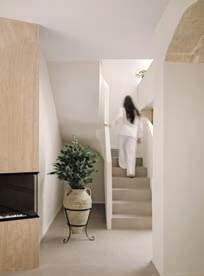




Theaddition of the stone that is visible in the dining room and the textured stone archway to the kitchen add an organic and rustic touch. The stone arches appear to be part of the original structure, lending a sense of history, heritage, and crafstmanship to the home. By retaining this feature, the designer paid homage to the building’s heritage, grounding the space in tradition and craftsmanship.The arch draws the eye and breaks up the clean lines of the modern design, blending the old-world charm with contemporary elements.
The choice and use of angular lighting creates atmosphere and ambiance through an interest interplay of light and shadow. The effect is achieved by carefully seleted fittings, include bespoke light fittings in travertine. The material was a deliberate choice and has been used effectively throughout the house as it blends harmoniously with the original old stone: travertine slabs have been used to finish the bathroom, in the custom-made kitchen island, and in the linear form of the fireplace that complements the linearity of the project’s design concept.
“Throughout the project we balanced the old with the new and the rough of the stone with the seamless, smooth and minimal furniture and smooth plastering,” Marienica says. “This combination of modern materials, natural elements like stone, and a neutral colour palette results in a warm, minimalist, and inviting home that is perfect for contemporary living. I found joy in creating such a calm space.”


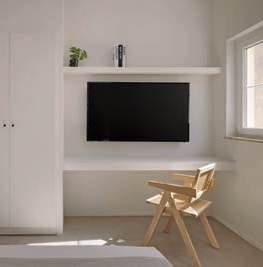


A room needn’t always remain as it is. You can shift things around, revive old furnishings and ornaments with a splash of paint, building up layers of personal history. Article by Megan Mallia
Asthe air grows cooler and the days draw in, now is the time when we really turn our attention to our homes. In one of the first issues of Flair , way back when it was a separate publication to Taste, Daphne Caruana Galizia penned a piece about “softening the look” of a space. “While the bare, spare, clinical look may provoke intense pleasure for a few months, or even as much as a year,” she wrote, “living day in day out with that “Hannibal Lecter lives here” look can get a little trying on the soul and certainly on the eye.” That was back in 2005, but what she said still holds true. Our spaces need a little bit of soul – it actually takes more of an effort to achieve the opposite.
A home is a living space in two senses: it is a place in which we live, and it is a space that is living, evolving over time. An immaculately white room, bare of any ornament bar a couple of

frames placed just-so, where a single speck of dust seems like a tuba among the flutes, can feel uncomfortable because it makes a residence go against its purpose: making its inhabitants feel at home. Unless the “Hannibal Lecter” look is what you are after, abandoning the “but does this go?” mindset gives you the liberty to build up your space as you like, layer upon layer, accumulating pieces as the years go by, without a care for matching them with what you already own.
The layered look is typical of maximalism, the antonym of (or antidote to?) minimalism. Some link the aesthetic to the sixteenth-century cabinet of curiosities, which showcased curious objects and finds from elsewhere – and also, by implication, the wealth and apparent worldliness

of its owner. Maximalism is typically defined as an aesthetic of excess, which suggests it is a bad thing. Maximalism is built on the maxim of “more is more”, but this is in reference to the emphasis it puts on colour, texture, and pattern, not on the quantity of objects and materials. A maximalist space is filled with different hues, fabulous prints that are mismatched and yet still seem to go well together, and a rich combination of textures. It is
It is not clutter for clutter’s sake, but things that are loved and are accumulated with purpose.




Mix the old with the new, the plain with the patterned, the smooth with the textured.
not clutter for clutter’s sake, but things that are loved and are accumulated with purpose. William Morris, a nineteenthcentury maximalist known mostly for his floral textiles, once said “have nothing in your house that you do not know to be useful, or believe to be beautiful”. Each item you own tells a story, or should.
Seen as a look that is built up in layers, maximalism takes little effort to achieve, but the effect is striking. Magazines collected over the years piled high atop a tea-stained coffee table; postcards from everywhere wedged between a mirror’s frame and glass; long strands of beads dripping from wrought-iron coat hooks; a crochet throw made over a winter a decade ago draped over a trunk you upholstered and decoupaged yourself; a patchwork of prints, paintings and photographs in frames of all shapes, sizes, and colours enlivening an otherwise blank wall.
A room needn’t always remain as it is. You can shift things around, revive old furnishings and ornaments with a splash of paint. Let the space evolve with your tastes and habits. If you fall in love with a painting, hang it up – or buy a print and have it framed. If a quirky ornament catches your eye, buy it, even if it doesn’t quite match the ones already scattered across the surfaces of your home. Take home that lucky find you unearthed at the flea market, and those ancient clothbound books you stumbled upon at a bazaar. Display tableaux of objects from cherished friends with precious photographs of family. Mix the old with the new, the plain with the patterned, the smooth with the textured. That’s what Robert Kime, the late collector-designer –and maximalist at heart – did when he crafted spaces from pieces he had gathered from all over. In his words, “buy what you love, what interests you”.
Make a room a place that you enjoy spending time in, a spot that will make you smile each time you walk into it. Your spaces should lift your soul. They should remind you of travels and of happy times and loved ones. If you prefer a simpler look, that’s fine too –just make it a space that is truly your own, not one prescribed by fleeting trends and misplaced notions of keeping up with the times. “It’s crucial to remember that you possess your rooms, and not vice-versa,” Daphne wrote in her piece. “You’re a real, live person with favourite objects, books that you love, objects that you’ve hunted down on your travels and in curious little shops [...] You mustn’t let any sterile scheme of perfection rid you of all that makes you what you are, of all that soothes your soul and spirit after a long, tiring day.” In short, dare to be a little bit different – and let your rooms take on a life of their own.


A remarkable showcase featuring over 50 of Van Gogh’s works paints a picture of the artist’s poetic imagination and vision. From the sun-drenched landscapes of Arles to the sombre reflections of Saint-Rémy, the exhibition reveals how Van Gogh transformed ordinary places into idealised realms of beauty and meaning, exploring the interplay between his creative spirit and the environments that inspired him.
“Van Gogh: Poets and Lovers”, explores how the poetic imagination and ideas associated with love evolved into central themes for the artist. Gathering more than 50 works from the Gallery’s own collection and from museums and private collections around the world, the exhibition is the first ever to focus on Van Gogh’s imaginative transformations.
Dwelling on his time in Arles and Saint-Rémy in the South of France (1888-90), it investigates the artist’s fascinating practice of turning the places he encountered into idealised spaces in his art, thus crafting a deeply resonant and poetic framework for his oeuvre. It also shows how portraits played a vital role, as Van Gogh assigned his models symbolic meaning within his artistic universe such as the “Poet and Lover” of the exhibition’s title.
In Arles, for example, the artist designated the public park in front of the Yellow House – in which, in 1888, he rented four rooms – as a Poets’ Garden, envisioning Italian
Renaissance poets Petrarch and Boccaccio strolling there. Some of his most glorious paintings and drawings of the time are associated with this idea, and pairs of lovers appear in paintings such as “Starry Night”, pictured here in these pages.
In Arles, in late summer of 1888, Van Gogh planned to decorate his Yellow House with “The Poet’s Garden”, the “Sunflowers”, “The Poet” and “The Lover”, paintings that were instrumental in his conception of a decorative scheme that quickly grew beyond the walls of the Yellow House.
In May and June of 1889, after Van Gogh was admitted to the Saint-Paul de Mausole hospital in Saint-Rémy, he imagined the asylum’s overgrown garden as a secluded site for lovers, painting spectacular compositions depicting views of the grounds. The exhibition shows how this idealising, euphoric exploration of the asylum garden contrasts dramatically with works from the autumn when Van Gogh, in contrast, associated the very same location with his and his fellow patients’ sufferings.




Olive trees with the Alpilles in the Background, 1889 (oil on canvas, 72.6 × 91.4 cm), The Museum of Modern Art, New York. Mrs. John Hay Whitney Bequest, 1998 © The Museum of Modern Art, New York/Scala, Florence
Van Gogh assigned his models symbolic meaning within his artistic universe such as the “Poet and Lover” of the exhibition’s title.
Van Gogh: Poets and Lovers shows how the artist sought to create important compositions for exhibition in Paris, initially in 1889, the year of the Exposition Universelle, when he hoped to display them as a cohesive group alongside works by fellow avant-garde artists. The exhibition explores how his choices for these works reflect his thinking about painting in series, his repeated references in letters to pendants, his use of opposites or contrasts to create harmony and cohesion, ideas he continued to pursue later in Saint-Rémy, as his works became increasingly known in avant-garde circles.
“Van Gogh: Poets and Lovers” is part of NG200: 200 years of the National Gallery, a year-long festival of art, creativity and imagination marking the Gallery’s 200th anniversary. The exhibition is open until 19 January 2025 at The National Gallery in London. Admission charges apply.

Tolomeo lamp by Artemide - An icon of Italian design, created by Michele De Lucchi and Giancarlo Fassina, was launched in 1987. Crafted from lightweight yet durable aluminium, it strikes the perfect balance between functionality, minimalism, and aesthetics. Its versatility, combined with an ingenious articulated arm system makes it ideal for various settings - from a focused desk light to a cosy reading lamp. Available at ESS showroom in Mriehel, Birkirkara.

Furninova introduces the NEW Rondo armchair. Featuring soft, rounded organic lines and a well-padded frame that provides a true sense of comfort and relaxation. Available in various finishes. Large selection of Furninova sofa’s and armchairs available exclusively from Satariano, 122 Msida Valley Road, Birkirkara. Tel. 2149 2149.


Bel DOK Malta by Meridiana is made from selected estate-grown Syrah grapes. It has a ruby-red colour with a purple rim; smoky aromas, scents of ripe berry fruits with hints of spices; and a complex, cherry-blackberry flavour with an enduring finish. Part of the wine is aged for six months in French oak barrique (225 lt) while a part is preserved in stainless steel to maintain freshness. After blending and bottling it rests for a further six months in the bottle. More info on www.meridiana.com.mt Trade Enquiries www.srausi.com
This panorama is like a large painting, taking its inspiration from the beautiful Sherwood Forest in Nottingham, UK. Sherwood collection by Arte wallcoverings is available in 3 beautiful colours. Large selection available from Satariano, 122, Msida Valley Road, Birkirkara. Tel. 2149 2149.
We will be back in November 2024 with The Malta Independent on Sunday. For advertising, contact Sean Ellul on +356 7921 0705 • sellul@independent.com.mt

Inspired by the elegance and beauty of the swan, the Swan faucet is born with a profound ecological character. combining design, efficiency and sustainability with the aim of achieving an environmentally friendly element. Created by ERRE Arquitectura & our brand partners Noken, Swan faucet has been awarded the iF Design Award 2024, Red Dot Design Award 2024 and Green Good Design Award 2024. Exclusively available from Satariano, 122 Msida Valley Road, Birkirkara.

